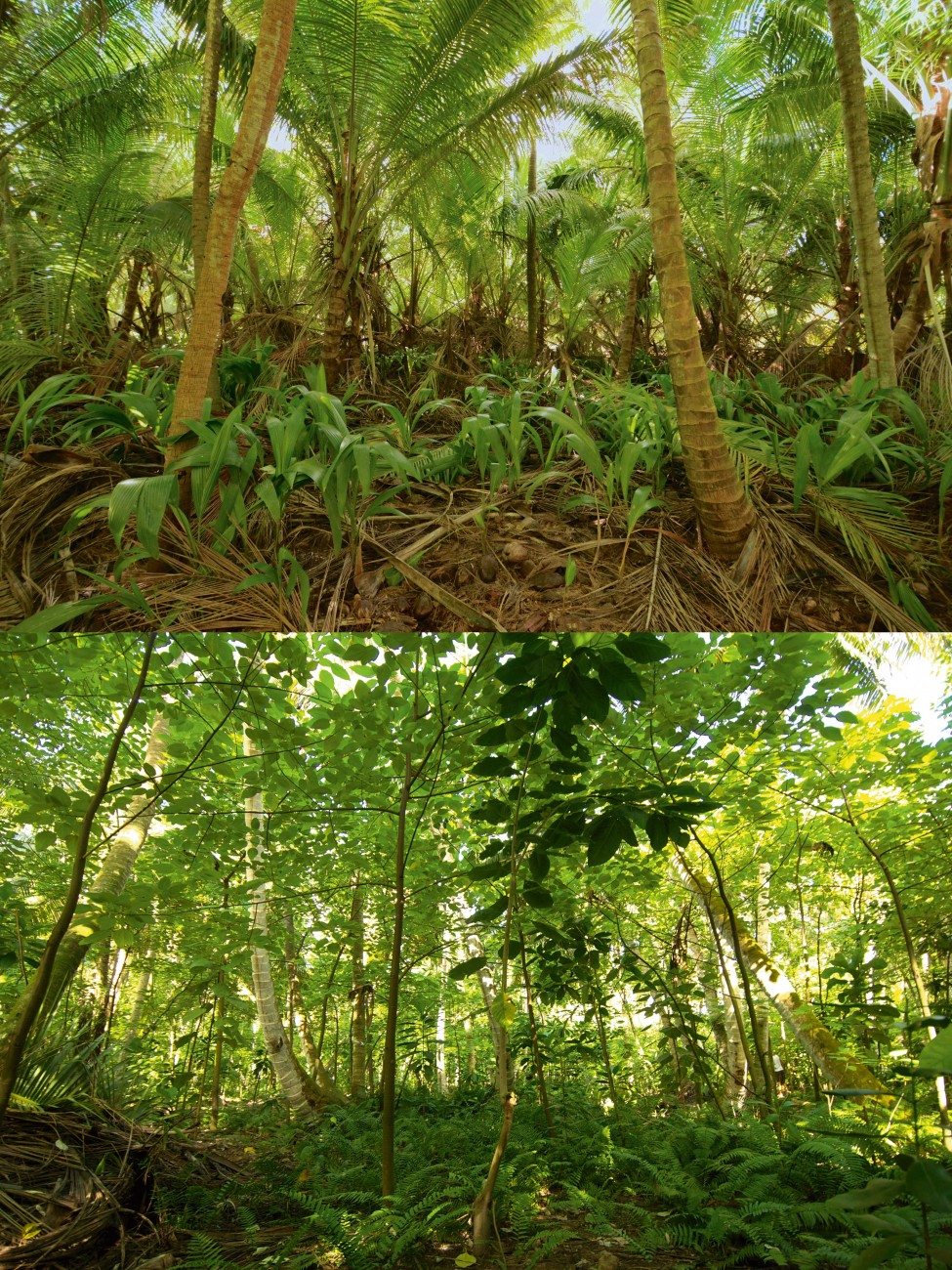A lesson in forest rehabilitation
Photo by Thomas Peschak
If you had arrived on the small island of D’Arros in the Seychelles two centuries ago, you would have landed on bright white beaches fringed with coconut palms and casuarina trees. In the interior you would have found patches of broad-leaf forest interspersed with scrub vegetation. Extensive deposits of ancient guano would have indicated that the island supported very large populations of nesting and roosting seabirds. It was also home to healthy numbers of giant tortoises, land crabs and indigenous birds.
Fast-forward 200 years and, in September 2004, the D’Arros Research Centre (DRC) was established on D’Arros Island and St Joseph Atoll. In August 2012, having come under the management of the Save Our Seas Foundation, the centre was renamed the Save Our Seas Foundation D’Arros Research Centre (SOSF–DRC).
All endeavours at the centre are in line with its mission statement, which is ‘To preserve and showcase the ecological integrity of D’Arros Island and St Joseph Atoll through research, monitoring, restoration and education’.
In its time the DRC has implemented no fewer than 36 research projects, which have focused on endangered marine species such as sharks, manta rays and turtles, as well as their habitats. Long-term programmes have been put in place to monitor nesting turtle numbers, coral reef health and climate change. Recently, under the expert guidance of the SOSF, the DRC has conceived additional targeted research projects and initiated an exciting environmental education programme.
But it’s not just about the ocean and its inhabitants. The marine and terrestrial environments are closely connected and the SOSF–DRC views them as equally important components of the D’Arros Island and St Joseph Atoll ecological unit. Native tree forests provide a home for abundant seabird populations, which contribute valuable nutrients to the terrestrial environment. These nutrients eventually run off into the ocean, where they stimulate plankton growth and provide food for animals higher up the marine food chain, such as manta rays.
SOSF D’Arros Research Centre
A biological field station based on D’Arros Island in the Amirantes Group, Seychelles, the SOSF D’Arros Research Centre (SOSF–DRC) conducts research on the pristine D’Arros Island and St Joseph Atoll and the waters around them. In recognition of the islands’ outstanding natural values, the research centre was established in 2004 and tasked with becoming a regional centre of excellence for marine and tropical island conservation. Initially, collaborations were established with local and international institutions and baseline ecological surveys were conducted in the various habitats. Over the ensuing years an increasing number of research projects and monitoring programmes were implemented in response to questions raised by the baseline surveys and by visiting scientists. More recently, the centre expanded its activities to include ecosystem restoration and environmental education.
Today the SOSF–DRC boasts the longest-running nesting turtle monitoring programme in the Amirantes and the most detailed and technically advanced coral reef monitoring programme in the Seychelles, making use of techniques such as stereo-video photogrammetry, photoquadrats, remote underwater video systems (BRUVs) and visual census. The research centre also maintains the largest acoustic receiver array in the Seychelles, which monitors the local movements of sharks, manta rays, stingrays, turtles and fish. Since its inception in 2004, the centre has initiated no fewer than 36 research projects in collaboration with more than 26 conservation institutions. The projects have resulted in 10 peer-reviewed scientific papers, one PhD and one MSc dissertation, five conference presentations and 27 scientific reports.

